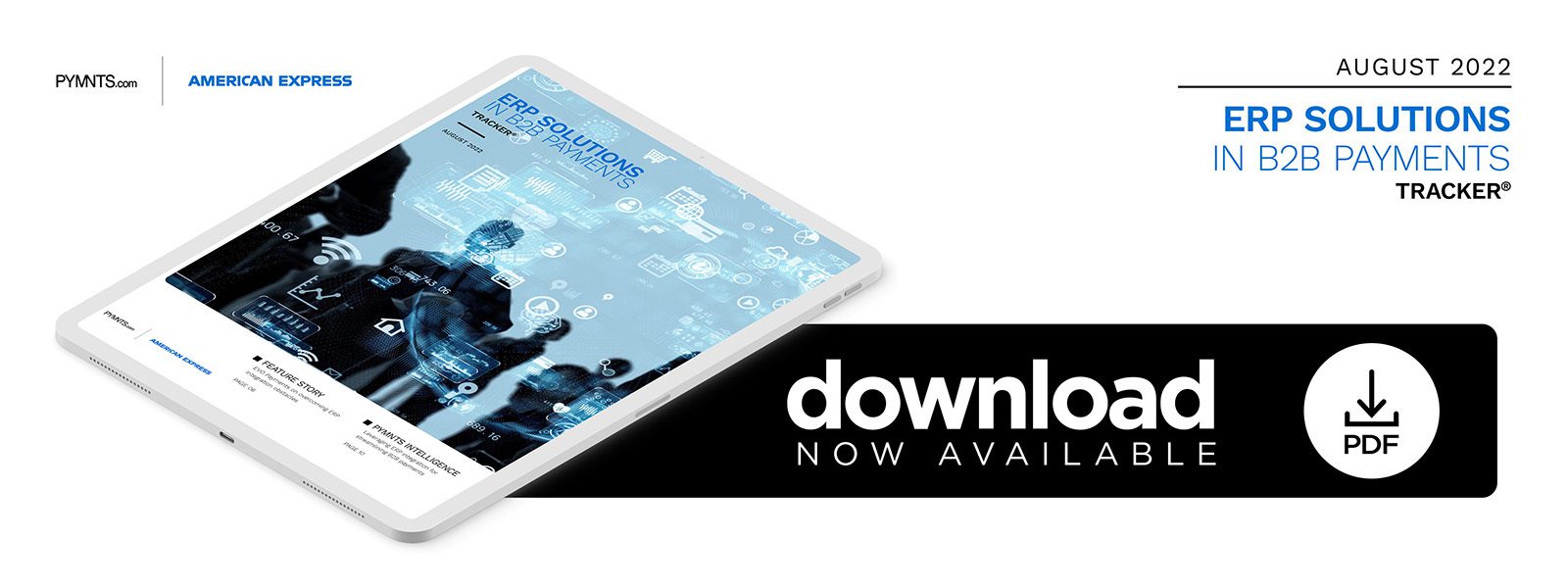PYMNTS Intelligence: Benefits and Challenges of Leveraging ERP Integration to Smooth Payments Reconciliation

The B2B payments market is expected to reach $1.9 trillion by 2028, and for such a massive facet of the modern economy, this everyday payment process is rife with obstacles and challenges.
Two friction points in particular plague accounting departments: invoice reconciliation and a lack of supplier portals. Forty-two percent of financial institutions (FIs) cited invoice reconciliation as an issue their corporate clients must overcome when paying vendors, making it the most prevalent B2B issue, with 9% saying it was their most important issue overall. Just less than 42% named the inability to offer supplier portals as a major problem for their corporate customers, with 15% saying it was their top issue.
Enterprise resource planning (ERP) systems are valuable tools for surmounting both obstacles. ERPs manage and automate invoice creation, accounts payable (AP) and a host of other B2B payment tasks, reducing the burden on human accounting staff. More than one-quarter of FIs are currently offering ERP integration to corporate clients to streamline payments flow management, according to PYMNTS research.
These systems can be difficult, costly and tedious to implement into legacy accounting systems, however, preventing more widespread use. This month, PYMNTS Intelligence examines the benefits ERPs can provide in B2B payment procedures and the obstacles impeding their ubiquity among banks and businesses.
How ERPs Can Enable More Seamless B2B Payments
ERPs are in high demand among large banks and businesses, with 67% of organizations having more than 2,500 payables per month saying they are very or extremely important for increasing the number of payables. PYMNTS’ research further found that 97% of firms said if they could not handle AP volume, it would hinder their goals for revenue growth, with 31% saying these goals would be very or extremely inhibited. More than one in 10 of these companies said they were developing or evaluating new features for their payments platforms, with 31% planning to innovate their AP systems within six months and 27% planning to do so within the next year.
ERP systems are a critical part of these B2B payment improvements, sparing accounting staff extra work by automating routine procedures such as payments, invoicing and other tedious tasks that distract professionals from more strategic work. A study found that 95% of companies that implemented ERPs said they have improved their business processes, and 82% of companies had met their projected timelines for the systems’ return on investment (ROI). The top three areas in which businesses cited ROI improvement include reduced IT costs, cited by 40% of respondents, reduced inventory levels, cited by 38%, and reduced cycle time, cited by 35%.
These numbers might raise the question of why more companies do not leverage ERP systems to improve their B2B payments. The systems, unfortunately, have a reputation for being expensive and difficult, but these problems are fixable.
Challenges in B2B Payments
ERPs are not without their challenges, especially when integrating with legacy systems. The exact nature of ERP complications varies. Forty-seven percent of organizations with ERP systems said a lack of customization was one of the major downsides, and 84% said their system was too large for ERPs to integrate effectively. Overall, 32% of ERP systems’ capacity remains unused, and 53% of businesses said they were not using up to 25% of their systems. Ninety-nine percent of businesses reported that they struggled to access information stored in their ERP systems, and 82% said the ERP system was making decisions based on outdated data. Another 85% said this bad data led to incorrect business decisions and lost revenue.
Effective ERP integration will rely on application programming interfaces (APIs) to use timely data and access the entire system’s functionality. These APIs allow companies to boost the interoperability of their systems and those of their clients, improving remittance details and back-end operations. APIs can aid payments and reconciliation processes by accessing a greater share of data, reducing the amount of missing remittance information and avoiding the need for phone calls or emails to follow up on receipts.
Most organizations may not fully realize the full potential of ERPs, but the use of third-party API integrations can vastly improve operational metrics. A faster, more efficient and less costly B2B payments system will not be far behind.

